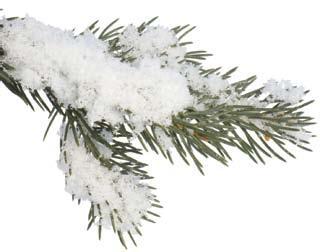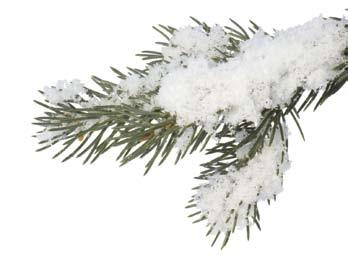
11 minute read
From the Grand Secretary: The Conference of Grand Masters in North America
From the Grand secretary
The Conference of Grand Masters in North America
The Conference of Grand Masters and Grand Secretaries in North America, to be held February 19-23, 2010, in Arlington, Virginia, provides us with an opportunity to review the history of this organization, its goals, actions and achievements. The Conference is attended by the Grand Master, Grand Secretary and stationed Grand Line officers of the member Grand Lodges, sister jurisdictions and associate members, as well as heads of concordant bodies and Masonic organizations, and interested observers from many other affiliated groups. Although it began in Chicago, Illinois, in 1925 and 1926, Conference of Grand Masters moved to Washington, D.C., in 1927 and continued to meet there annually until 1963 when the decision was made to go to Kansas City that year. What brought it to being? The first Masonic assemblage to consider unified action by American Freemasonry was the famous “Convention Lodge”, held during the Revolutionary War by American Union Lodge at Morristown, New Jersey on February 7, 1780. It met to consider the establishment of a National Grand Lodge with George Washington as General Grand Master; an idea that did not materialize, despite frequent attempts to revive it, because of insufficient enthusiasm and growing opposition. The nineteenth century witnessed a large number of national Masonic “congresses”, throughout the country, which generally were called to achieve uniformity of ritual in all Grand Lodges, and were successful to a great degree. Others who still pursued the creation of a National Grand Lodge did not achieve much and the idea was deemed dead, or almost so. The fear of a National Grand Lodge persisted, however, so a new label was found for such assemblages. Instead of “congresses”, which suggested legislative bodies with authority, the meetings of Grand Masters became known as “conferences”.



In the early years of the twentieth century, a number of conferences were held in rapid succession, with varying attendance, where delegates listened to comments and reports dealing with problems
Mansour Hatefi, PGM
Grand Secretary


of inter-jurisdictional significance, such as uniform practices in printing petitions, inter-jurisdictional protocol, perpetual jurisdiction over candidates, and the confused state of recognitions by American Grand Lodges. The increasingly popular idea of creating a national Masonic memorial to Brother George Washington provided the incentive to hold a number of gatherings, not so much as a Conference of Grand Masters, but as the first step in the founding of the George Washington (National) Masonic Memorial Association, leading to the organization of a continuing Grand Masters Conference and influencing the time and place of meetings. World War I and the entry of the United States into the conflict in 1917, presented American Freemasonry with tremendous challenges and opportunities. However, all the efforts of 49 Grand Lodges to serve their sons and brothers in the Armed Forces were blocked by the refusal of the government and military officials to deal with so many independent agencies instead of with one which could act for all. This frustrating situation stirred the determination of some of the Fraternity’s leaders, convincing them of the continuing need for an association of Grand Lodges - not a supreme grand lodge – but a servant of all the jurisdictions. As a result the Masonic Service Association of the United States was born.


Thus, the laying of the cornerstone of the George Washington National Masonic Memorial first set the pattern for a National Masonic Week in Washington, D.C., when on three successive days in 1923 - October 30, 31 and November 1 – The Masonic Service Association, a Conference of Grand Masters, and the Memorial Association met in the nation’s capital. At that 1923 meeting of the Masonic Service Association the first proposal was voiced for a yearly conference of Grand Masters to be held in connection with the Association’s annual meeting, and in February at the time when the George Washington National Masonic Memorial Association usually met (on or about the 22nd of February). And thus the modern Conference of Grand Masters, (which began in Chicago in 1925), moved to Washington, D.C. in


1927 and remained in the capital city until 1963, in individual views on the subjects discussed. No spite of a number of attempts to move it. (The Grand definite action can be taken by such a conference Secretaries Conference was first held in 1928). which would in any way commit or bind any The records suggest that the chief reason for this long sojourn in the District of Columbia was the proximity of the magnificent Memorial in Alexandria; Grand Lodges felt an obligation to support that great project so long as it needed assistance. Furthermore, the historic association of George Washington’s home at Mt. Vernon, his simple but hallowed tomb, and the headquarters of the republic which he had helped to found by Masonically laying the cornerparticipating Grand Lodge. Each conference is a distinct and separate assembly; it has no permanent existence of authority. Its deliberations are never an official declaration of Masonic jurisprudence or philosophy. Each conference expires on its adjournment, except for the machinery it sets up for the next meeting or a voluntary association of Grand Masters to meet, to confer, and to learn from one another. “What we have long From the very beginning, it was clearly understood stone of its Capitol – all these drew Grand that these conferences needed, and in recent years have been Masters to Washington like a magnet. To are a voluntary assembly developing, is a unity of purpose and action help lay a Masonic growing out of these wreath on Washington’s sarcophagus on of Masons, meeting annual conferences. We have learned that the anniversary of his birth frequently informally, and expressing we can do more effective work in our own meant the fulfillment of a long-held vow to their individual views on jurisdictions if we are in a position to act in make a pilgrimage to the light of as comthe grave of the most famous Freemason in the subjects discussed. plete knowledge as possible of the aims American history. When the Conference of Grand Masters moved to Washington, D.C., it was still feeling its way without any formal organization and without a clearly No definite action can be taken by such a conference which would in any way commit or and experiences of our brethren from Maine to California.” Willis J. Bray, GM 1946, Missouri. Knowledge was still one of the chief goals of the Grand Masters Conference. defined philosophy Financing of these of its objectives and purposes. Expressions bind any participating conferences, soon became an issue, and about the goals and formal organization of Grand Lodge. although there were a number of Grand the Conference would Lodges willing to foot come later, and rules the bill and have the of procedure were to conferences held in grow out of custom and practice, especially when it D.C. or elsewhere, the general feeling was that all was realized that the conference promised to become should, according to their means, share the expenses. an annual opportunity for friendship and Masonic And although the conference met in Washington, intercourse. D.C. from 1927 to 1963, no one after the first year From the very beginning, it was clearly understood that these conferences are a voluntary assembly of Masons, meeting informally, and expressing their really considered the Grand Lodge of the District of Columbia as the host, and no formal invitation was required of this Grand Lodge. Although it was gener











ally accepted that the conference is an independent ters invited Masons in Congress and “no host affair”, that it is free to go where it pleases the Federal Government, and their for its annual sessions, owing to lack of invitations ladies, to the Banquet, whereby from other jurisdictions, the Conference decided to Grand Lodges were enabled to stay in Washington, for as long as it did. honor their distinguished brothers Since its inception, the Conference has gone through many changes. To begin with, the title of the assemblage which was recorded as “Conference in public life and to help them realize that Freemasonry is a potent force in our national existence. of Grand Masters of Masons in the United States, in Another subject tackled as early as 1928 was the the printed proceedings since 1927 was changed to issue of the recognition of other Grand Lodges “Conference of Grand Masters of Masons”, in 1946 whereby a list of all Grand Jurisdictions recognized after agreeing to seat participating representatives by United States Grand Lodges, together with a list from the Grand Lodges of Canada, Mexico and the of the standards for recognition adopted by many islands of the West Indies. American Grand Lodges in America and Canada, Then came the appointment of a chairman, other than the Grand Master of the “host” jurisdiction, …Grand Lodges were as well as United Grand Lodge of England and the Grand Lodge of Ireland, were prepared. and a secretary and committee on agenda or enabled to honor their In 1952, based on various recommendations program – the forerunner of the present Conference distinguished brothers received in previous years for the creation of Committee, and numera continuing commisous changes in the numbers and make-up of in public life and to sion to gather, collate, and, from time to time, the committee, until the idea of rotating agenda help them realize to revise, information on Grand Lodges in other committee and lengthening the Conference from that Freemasonry is lands as a service to the member Grand Lodges a one-day program to a of this Conference in two-day affair in 1934. The rotating three-year Agenda Committee, one of the early creations of the Grand Masters Conference was short lived since it seemingly gave the ”hardy and talkative“ Past Grand Masters the opportunity to pack the committee and freely participate in the discussions in spite of the general consensus that only Grand Masters, or their representatives, were to present papers and to participate in the discussions. arriving at their own conclusion concerning any applicant for recognition, and also on the basis of the report of a special committee appointed to study such facility, the Commission on Information for Recognition was created. The Commission, with a make up similar to its current composition, was to be financed by voluntary contributions from Grand Lodges, based on their membership. a potent force in our national existence. Ultimately, in 1956, the Conference formally voted that the Conference Committee be composed of the Executive Secretary, ex officio, and eight members being brothers “who will be Grand Masters during the Conference whose program they prepare.” And so it has remained. Of all the precedence which led to established procedure in the Conference, this one was one of the most carefully planned and thoroughly organized, and it continues to discharge its responsibility effectively – to gather and collate information for recognition. What Grand Lodges do with it is by Masonic right and custom their sovereign preThe 1948 conference also recorded another change rogative. The commission exists to fulfill one of the in tradition when for the first time the Grand Masters’ principal objectives of the Conference itself – To Banquet was graced by the presence of the ladies. Share Knowledge. n And in another significant development, Grand Mas



















